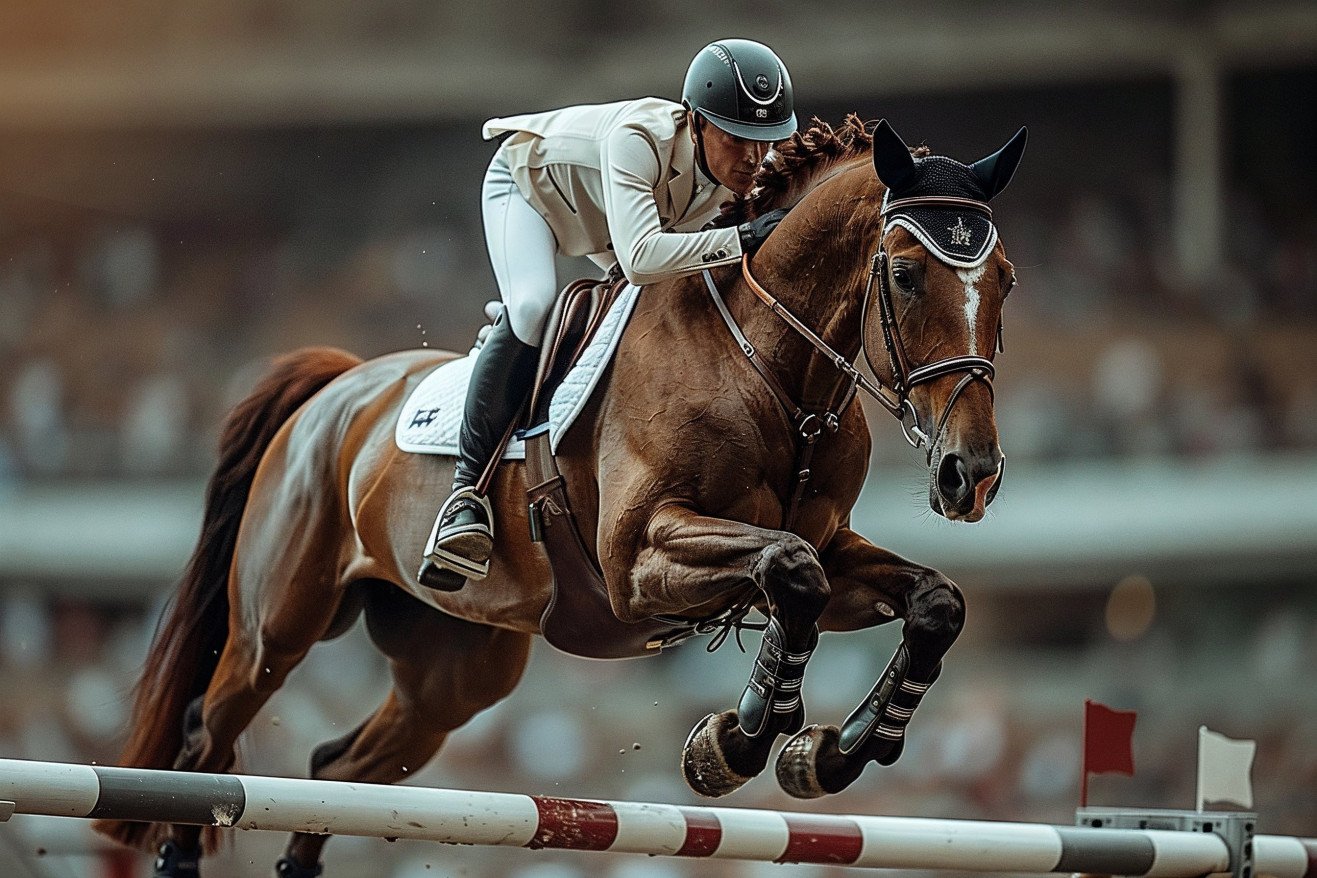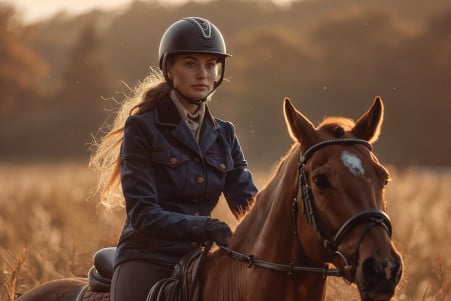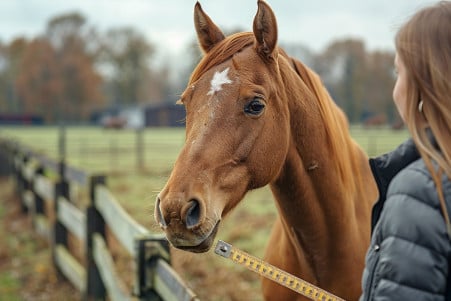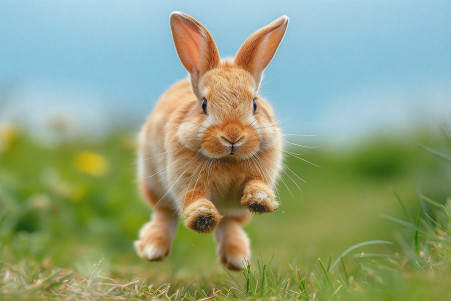Is Horseback Riding a Sport? Exploring the Physical and Mental Demands
10 May 2024 • Updated 10 May 2024

If you’re a rider yourself or just interested in the competitive side of horseback riding, you may have heard the question of whether or not horseback riding is a sport. The answer is yes, horseback riding is a sport, and it meets the criteria for a sport based on several definitions, including physical exertion, skill development, competition with rules and a winner, and recognition by the International Olympic Committee.
In this article, we’ll look at the many studies that have been done on this topic, and we’ll talk about the physical and mental demands that horseback riders face, comparing them to other sports. We’ll also discuss the relationship between horse and rider, which is a big part of what makes horseback riding different from other sports. By the end of this article, you’ll have a better understanding of the athleticism and skill that goes into horseback riding.
Is horseback riding a sport?
Physical Requirements of Equestrianism
Equestrianism requires riders to be in top physical shape. According to Sporting Bounce, equestrian athletes need to have strong cores, legs, balance, coordination, endurance, flexibility, and upper bodies. Riders need to be able to maintain their position and control a horse while performing difficult moves, which requires a lot of strength and endurance.
The physical demands of the sport depend on the discipline. Research published by Science-Equine notes that show jumping, eventing, and racing are more anaerobic and require short bursts of energy. On the other hand, dressage and trail riding are primarily aerobic. However, all disciplines require riders to have strong cores and good postural control.
To improve their performance, riders need to follow personalized strength and conditioning programs, as explained by Resilient Fitness. These programs can help improve general fitness, core strength, endurance, injury resistance, balance, and discipline-specific skills. Like other athletes, equestrians need to work hard to make sure they can meet the physical demands of their sport.
The Mental Game: Sport Psychology in Equestrian Sports
Riders face a number of psychological pressures in equestrian sports, including fear, anxiety, perfectionism, and confidence. As noted by The Horse Journals, the need for effective communication and partnership with the horse means that riders need to develop emotional intelligence and the ability to recognize and interpret the horse's emotional responses.
Mental attributes like focus, concentration, and emotional control are important for success, since riders need to stay calm under pressure. As pointed out by Sporting Bounce, sport psychology strategies, including goal-setting, visualization, and self-talk, can be used to help riders build mental strength, handle pressure, and improve their performance.
Sport psychology can help riders in a number of ways, including with injury recovery, performance improvement, and mental health. Heels Down Mag notes that equestrians need to be "mentally sharp" to succeed, since they need to think and make decisions on the fly while working with a 1,000-pound animal.
The Olympic Legacy: Equestrian Sports on the World Stage
Equestrian events have been a part of the Olympic Games since their ancient Greek origins, as described by Wikipedia. The three modern Olympic equestrian disciplines—dressage, show jumping, and eventing—have been included in the Games since the early 20th century, according to the Olympic website.
Equestrian is also unique at the Olympics because it’s the only sport in which men and women compete against one another on an equal basis, as noted by the Olympic website. The International Federation for Equestrian Sports (FEI) oversees the Olympic equestrian disciplines and non-Olympic disciplines such as driving, endurance, and vaulting, according to the FEI website.
Olympic equestrian events are highly competitive and require athletes to qualify through a series of selection trials and meet strict standards for both horse and rider, according to the 2024 Olympic Games selection procedures set forth by US Equestrian. This demanding process demonstrates the honor and difficulty of competing in equestrian sports at the international level.
Health Benefits and Riding Trends
Horseback riding has been shown to have a number of physical, social, and psychological benefits, including improvements in balance, coordination, and posture. In a study in Frontiers in Psychology, researchers found that people who ride horses regularly experience better physical fitness, relaxation, social interaction, and preventive health behaviors.
Although many studies have looked at the benefits for people with disabilities, a more recent study from Texas A&M University has also examined the benefits for people without disabilities. The study found that horseback riding can be a good way to get exercise, with cutting and reining providing the most vigorous workouts and walk-trot-canter providing the most total energy expenditure.
Participation in equestrian sports is impacted by a number of factors, including age, experience, and whether people are riding for fun or competition. A study in the Journal of Psychology found that the benefits and barriers to horseback riding can differ based on these factors. This information can be used to encourage and increase participation in horseback riding in different populations.
Safety and Injury Prevention in Equestrian Sports
Horseback riding is inherently risky due to the size and unpredictable nature of horses, and it has a higher rate of serious injury than many other sports, according to The Silver Lining. Injuries that are often associated with equestrian sports include head injuries, ankle sprains, wrist injuries, and injuries that occur when a rider is thrown or kicked by a horse.
Safety precautions, including the use of protective equipment such as helmets and riding boots, ensuring safe and secure environments, and adhering to safety standards, can help prevent injuries, notes Equine Programs. Meanwhile, experience, the desensitization of horses, and the acknowledgment and understanding of horses' instincts and abilities are important for the safety of riders, according to HealthyChildren.org.
Equestrian sports organizations and facilities can help ensure safety by implementing safety measures, offering proper supervision and training, and making sure that all participants are aware of the risks involved. This will help ensure that everyone involved is as safe as possible. As the sport grows and changes, it will be important to continue to prioritize safety for the well-being of riders and horses alike.
Inclusive Equestrian Sports: Para-Equestrian and Adaptive Riding
Para-equestrian sports are for athletes with physical disabilities and include dressage and driving events, according to US Equestrian. Riders and drivers are classified according to their functional abilities to ensure that everyone is competing against others with similar capabilities. Para-dressage is one of the events at the World Equestrian Games and the Paralympic Games.
Adaptive riding programs and organizations, like the ones listed by Equine Programs, provide therapeutic and recreational horseback riding for people with disabilities. Heels Down Mag explains how equestrian sports can help people with disabilities in physical, emotional, and social ways, which can lead to more inclusivity and empowerment.
Conclusion: Why Equestrian Sports Are Here to Stay
By every measure, horseback riding qualifies as a sport. It requires physical and mental skill, it has a set of rules and regulations, and it is competitive. The added element of the horse and rider working together as a team makes it even more challenging, requiring the ability to communicate, work together, and stay focused.
Yet, despite the danger and expense, equestrian sports are still popular and growing around the world. The physical, social, and mental rewards, combined with the excitement of competition and the bond with horses, make equestrian sports a valuable and lasting pursuit. As people become more aware of the demands and the inclusivity of equestrian sports, their popularity and acceptance as a sport will likely continue to increase.


